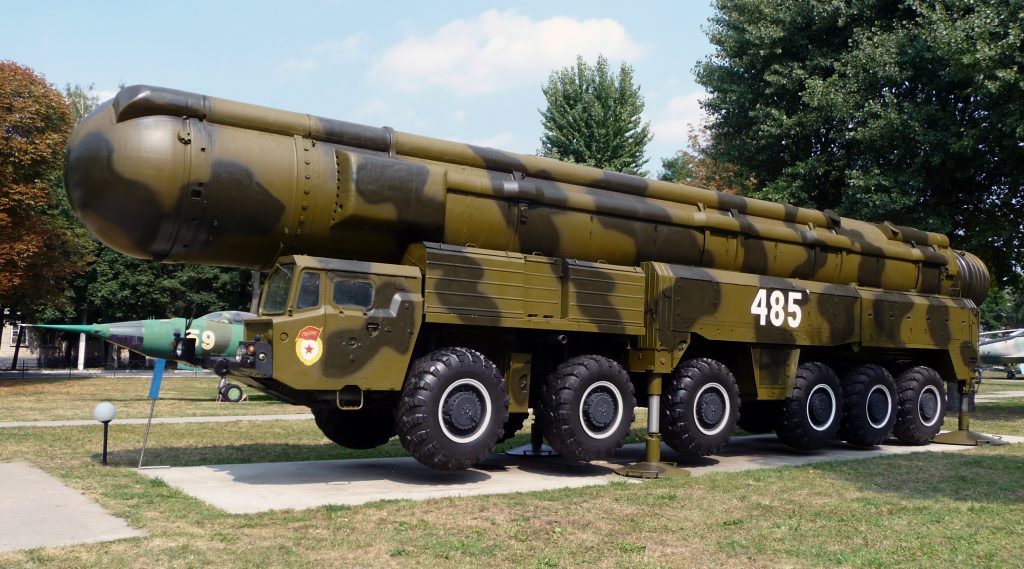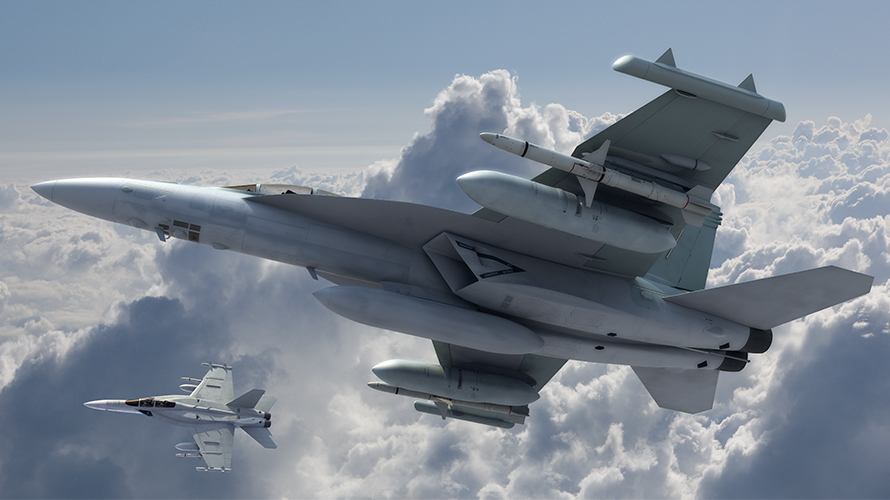Pentagon Jumpstarts Hypersonic Targeting, Electronic Warfare, C2
Posted on
PENTAGON: Fed up with neat technologies that never turn into usable weapons, the Pentagon’s director of advanced capabilities is taking a new approach to crucial missions like finding time-sensitive targets for hypersonic missiles, waging large-scale electronic warfare, and building new command-and-control networks.
Bids are already in for the targeting initiative, James Faist told reporters this afternoon, and companies that want to participate in the industry day for electronic warfare need to sign up by Friday.
These are all “really urgent needed missions,” Faist said, prioritized by the Office of the Secretary of Defense, the Joint Staff, and the four armed services through extensive discussion, research, and wargaming. “These are well defined areas that we’re behind our adversaries,” he said. “We have to catch up.”

Soviet SS-20 (SRD-10) Intermediate Range Ballistic Missile (IRBM) on its road-mobile Transporter-Erector-Launcher (TEL).
Time-Sensitive Contracts For Time-Sensitive Targets
The first of Faist’s initiatives is already well underway. More than 90 companies, many of them small businesses, have made competing proposals for tracking high-priority mobile threats like truck-borne missile launchers, a prime target for the new hypersonic missiles the military is developing. The Pentagon will award multiple contracts for feasibility studies on June 14th, with the studies due in just three months, i.e. before the fiscal year ends Oct. 1st. The contenders that produce the most promising studies will then have “two to three years at most,” Faist said, to build working prototypes, i.e. no latter than 2022. The best prototypes will then move quickly into Low-Rate Initial Production (LRIP) of combat-ready systems.
In a marked departure from typical Pentagon practice, all these activities — from feasibly study to early production — will take place under a single contract. At each stage, Faist and his staff will cull companies that don’t cut it, but the proposals that do impress him get to proceed to the next phase without having to negotiate a new contract — a hurdle which often delays, disrupts, or even kills programs entirely under the standard system. The time to negotiate a new contract, he said, will come only when he decides to hand over the program to one of the four armed services to move from low-rate to full-rate production. By that point, the program should have plenty of momentum to carry it through.
“The intent is to get rid of the contractual… valley of death,” Faist said. To do this, he’s using what’s called Other Transaction Authority (OTA) to bypass a lot of the usual procurement bureaucracy and Cooperative Research And Development Agreements (CRADA) to share government-developed technology with private companies large and small. But the most innovative aspect is how he’s making novel use of a vehicle known as a Broad Agency Announcement.
Now, normally, a BAA solicits proposals for basic research, applied research, and experimental proofs of concept in a broad area of technology — DARPA often uses them this way — which means the projects they produce often fall into the valley of death. But Faist is using his BAAs to develop already-mature technologies into usable weapons systems and then start low-rate production. In terms of the federal government’s official Technology Readiness Levels, he said, proposals need to be at least TRL 4, demonstrated to work in the lab, if not the field.
All too often, Faist said, bright scientists in industry or a Defense Department lab come up with a really cool technology that wins limited funding but never gets enough to cross the “valley” into the much more expensive development and production phases — because the techies don’t convince the four armed services that their neat idea offers real return on investment for a specific military mission. That’s all backwards, he said.
“It needs to start with the mission concept,” Faist said. “What we weren’t doing was really that up-front mission engineering, mission integration… before we prototyped the joint efforts we were going to do.” So in the new approach, he said, the Office of the Secretary of Defense, the services, and the operational Combatant Commands thoroughly brainstorm and wargame out what mission areas we urgently need to improve, then go looking for specific technologies.
EW, Networks, & Beyond
Faist is already moving out on the next mission area after moving targets: electronic warfare. He expects well over 100 proposals this time round, though he didn’t give a due date yet. The draft Broad Agency Announcement on EW came out last Thursday (May 16th), he said, and the industry day will be held the 29th: Companies wishing to participate need to sign up by the end of this week.
Faist was apologetic about the short notice for any interested companies that haven’t already heard. The Pentagon-based Washington Headquarters Service is handling the contracting, and while they’re doing a great job, he said, they’re not the usual suspects for this kind of competition, so a lot of companies may not have been watching for announcements from them.
This kind of speed is necessary because electronic warfare is “an area that we’re behind our adversaries, we’re not moving fast,” Faist said. Across OSD and the services, he said, “when we mentioned the idea of doing this there was just a groundswell of enthusiasm… .because we’ve just lost so much capability.” Faist himself was an electronic warfare officer in the US Air Force — which, like the Army, disbanded almost all its EW assets in the post-Cold War drawdown.
Much of the EW project is highly classified, but Faist did make clear that it’ll involve far more than short-range defensive jammers to protect ground vehicles from roadside bombs or aircraft from surface-to-air missiles. He’s seeking systems to wage electronic warfare on a large scale against an adversary such as Russia’s well-equipped EW battalions, pursing what he called “offensive and defensive electronic warfare dominance.” He also said the focus would be on autonomy and software, including AI-enabled systems that can rapidly adjust to new enemy tactics.
Sometime this summer, Faist plans to issue a third BAA, this one on what’s called Fully Networked Command, Control, & Communications (FNC3). That’s a fairly new term of art inside the Pentagon, but it implies a new level of real-time, secure information sharing among the different services around the world — the kind of command system required to implement a new warfighting concept called Multi-Domain Operations. The FNC3 problem, Faist said, is “at least as hard” as electronic warfare — but once that Broad Agency Announcement is out, he’ll already be working on the next.
Subscribe to our newsletter
Promotions, new products and sales. Directly to your inbox.


